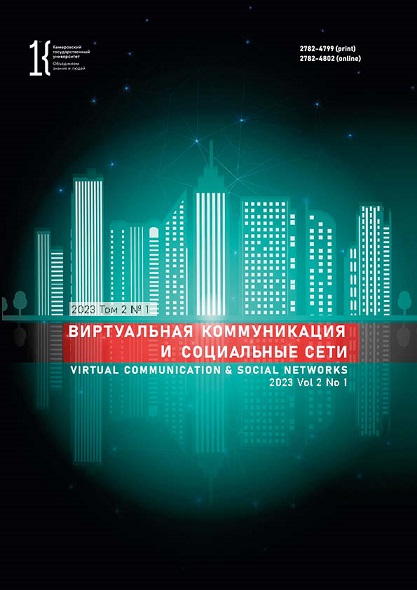Ufa, Russian Federation
Ufa, Russian Federation
Social networks provide a convenient platform for art dealing and marketing. Many digital illustrators have art blogs where they post and promote their work, which they may also exhibit at traditional offline galleries. The sphere of digital art is highly competitive and open to new effective promotion tools, which makes it a prospective research subject. This study featured an online community of digital artists in the VKontakte social network, as well as the methods they use to attract potential buyers and increase their fandom. The research relied on the information and communication method supported by such sociological tools as expert survey and content analysis. The expert survey made it possible to classify digital illustrators into those with maximal, medium, and minimal popularity, as well as to identify the most effective promotion tools for each group. The VKontakte social network offers a wide range of promotion tools, based on the algorithms of this social network. The popularity of young digital artists depends on such factors as relevant content and joint projects with mature digital illustrators. The research contributes to the development of the genre of digital illustration and the fine art in general.
Illustration, art, promotion, blog, bloggers, Vkontakte, social network
1. Astashkin A. G., Bresler M. G. Social media in the structure of modern network communication. Uchenye Zapiski Kazanskogo Universiteta. Seriya Gumanitarnye Nauki, 2018, 160(4): 814-822. (In Russ.)] https://www.elibrary.ru/rxqwgz
2. Bresler M. G. Ontology of network existence. Ufa: USPTU, 2020, 110. (In Russ.)] https://elibrary.ru/kgjebq
3. Bresler M. G., Rabogoshvili A. A., Suleimanov A. R. Role of the symbolic in the identification of an information/digital society person. Studia Culturae, 2020, (45): 18-34. (In Russ.)] https://www.elibrary.ru/bzxxbe
4. Orlova V. V., Perin A. S., Aleksandrova Yu. K., Petrov E. Yu., Goiko V. L. Features of the study of the process of forming communities of social networks in the vkontakte network. Sociology, 2021, (1): 38-45. (In Russ.)] https://elibrary.ru/gkhpvd
5. Raspopova S. S. Subjects of information activity in the mediaethic field. Znak: problemnoe pole mediaobrazovaniya, 2019, (4): 185-189. (In Russ.)] https://doi.org/10.47475/2070-0695-2019-10422
6. Raspopova S. S. The ethical dimension of media in the postmodern area. Znak: problemnoe pole mediaobrazovaniya, 2019, 2: 119-124. (In Russ.)] https://www.elibrary.ru/pbxema
7. Franck G. The economy of attention. Journal of Sociology, 2019, 55(1): 8-19. https://doi.org/10.1177/1440783318811778
8. Fu X., Feng T. Online simulation of illustration patterns based on digital art design. Mobile Information Systems, 2022, (12): 1-9. https://doi.org/10.1155/2022/3273364
9. Hanafizadeh P., Harati Nik M. R. Configuration of data monetization: a review of literature with thematic analysis. Global Journal of Flexible Systems Management, 2020, (21): 17-34. https://doi.org/10.1007/s40171-019-00228-3
10. Mills R. Future dialogs for illustration. A Companion to Illustration, ed. Male A. John Wiley & Sons, 2019, 493-514. https://doi.org/10.1002/9781119185574.ch21
11. Patel N. A., Powers S. L. D., Parrish R. K. Modernizing the American Journal of Ophthalmology: social media, podcasts, and digital illustrations. American Journal of Ophthalmology, 2022, 239: 9-10. https://doi.org/10.1016/j.ajo.2022.02.005
12. Sarkar S., Sarkar P. Consumer behavior towards mobile social media and OTTs from data monetization and customer engagement perspective. Telecom Business Review, 2020, 13(1): 6-19.















